Portugal

Visit Portugal
Occidens Tours organises your trip to charming Portugal to the last detail.
On your round trip, you will discover its unique cultural heritage: Manuelinan arts & arquitecture, azulejos & fado songs are are only a few accents of the authentic Portuguese identity, from the fascinating and bohemian capital of Lisbon to the dreamy Algarve coastline. A perfect destination for your next vacation!
Portugal, founded in 12th century is known as the “land of the explorers and discoveries” is known for its ancient naval history. Important personalities like Vasco da Gama and Pedro Álvarez are only a few of a large number of Portuguese explorers, that have left a rich historic and cultural legacy.
To its visitors, it offers a multicolour landscape, composed of pittoresque cities and villages, terrific Atlantic coastline, spotted with lots of medieval castles and fortresses in its hinterland. And, last but not least, a very rich and varied gastronomy, reaching from all sorts of fresh seafood, fresh vegetables and lots of typical meals, according to the regions you might be travelling to. The most famous wine regions of Oporto and Miño will fascinate you, we promise.
Portugal was elected BEST COUNTRY TO BE VISITED in 2014 by the Spanish edition of CONDE NAST TRAVELER magazine, and was named BEST VALUE DESTINATION by ROUGH GUIDES in 2014, too.
Até breve!
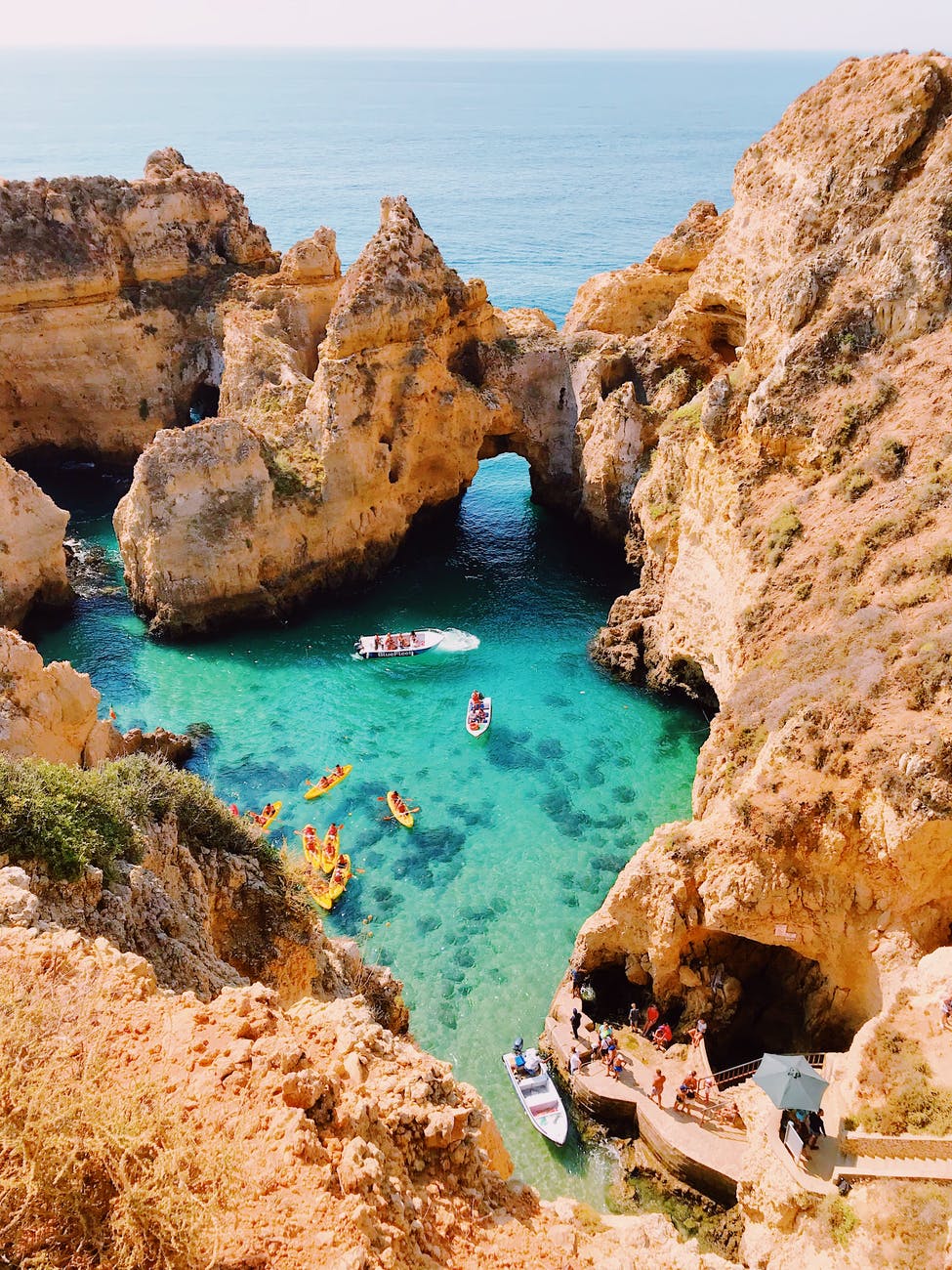
GEOGRAPHY
Come and discover the charms of this country too. Portugal is situated at the south-west point of Europe and also includes the Madeira and Azores archipelagos in the Atlantic Ocean. Mainland Portugal occupies an area of 88,889 km2. It is 218 km wide and 561 km long. It has 832 km of Atlantic coast and a 1,215 km border with Spain. The Azores are situated in the Atlantic Ocean between Europe and North America. They have an area of 2,355 km2 and consist of nine islands - São Miguel and Santa Maria in the Eastern Group, Terceira, Graciosa, São Jorge, Pico and Faial in the Central Group and Flores and Corvo in the Western Group. It takes about two hours to get from the Azores to mainland Portugal by plane. The Madeira Archipelago has an area of 741 km2 and lies in the Atlantic Ocean about 500 km from the African coast and 1,000 km from the European continent (1½ hours flying time from Lisbon). It consists of the islands of Madeira and Porto Santo and the uninhabited Desertas and Selvagens islands, which are nature reserves.


Climate
The climate in Portugal varies considerably from one region to another and is influenced by the relief, latitude and proximity to the sea, which offers mild winters, especially in the Algarve.
In the Porto e Norte area and Beiras region, particularly inland, nearer Spain, the winters are colder, although the temperatures are still mild when compared to the rest of Europe. There is some snowfall. It occurs most in the Serra da Estrela mountains, where we find the highest point in mainland Portugal (1,991 m) and where it is sometimes possible to ski.
The summers are hot and dry, especially in the inland areas (Trás-os-Montes in north-eastern Portugal and Alentejo). Temperatures are slightly lower in the coastal areas, because of the influence of the sea.
There are often warm, sunny days in autumn. Nice weather at the beginning of November is often called “St. Martin’s Summer” as this saint’s day is on 11 November.
Azores
The climate in the Azores is influenced by the islands’ latitude and by the Gulf Stream, and temperatures are mild there all year round. The same factors also influence the sea temperature, which is very pleasant both in winter and summer and ideal for nautical sports all year round.
Madeira
The subtropical characteristics of the weather in the Madeira Archipelago can be explained by its geographical position and mountainous relief. The climate in Madeira is exceptionally mild, with average temperatures varying between 24 ºC in summer and 19 ºC in winter.
The sea temperature is also very pleasant all year round, thanks to the influence of the warm Gulf Stream. It varies between 18 ºC in winter and 22 ºC in summer.
Population
Portugal has a population of about 10 million.
The population density is at its greatest in Lisbon, the capital and its suburbs, where about 1.9 million people live. The second largest city in Portugal is Oporto in the north.
Generally speaking, there are more people living in the country’s coastal regions than in the inland areas.
Religion
The majority of Portuguese are Catholics, but the Portuguese Constitution guarantees religious freedom and there are a number of different religions in Portugal.
Language
From a Latin root, Portuguese is spoken by about 250 million people in every continent, and is the 5th most spoken language in the world and the 3rd, if we only consider the European languages.
The Portuguese-speaking countries are scattered all over the world. Portuguese is spoken in Africa (Angola, Cape Verde, Guinea-Bissau, Mozambique and São Tomé e Príncipe), in South America (Brazil) and in Asia, (East Timor, the youngest nation in the world), and it is also the official language in Macao Special Administrative Region of China.

Destinations
Just to give you a survey over the most important cities, villages and sites, you could visit with Occidens Tours: Lisbon – national capital, city of the seven hills Aveiro – the «Venice» of Portugal Braga – city of Archbishops Coimbra – home of the ninth oldest university in the world. Évora – «Museum City», Alentejo regional capital Funchal – the capital of Madeira Guimarães – the founding place of the nation Porto – «Unvanquished City», along the river Douro and the Atlantic Ocean Viana do Castelo – Famous for the Nossa Senhora da Agonia Festival. Albufeira – Main tourist destination in the Algarve Faro – The administrative centre of the Algarve Fátima – Pilgrimage destination
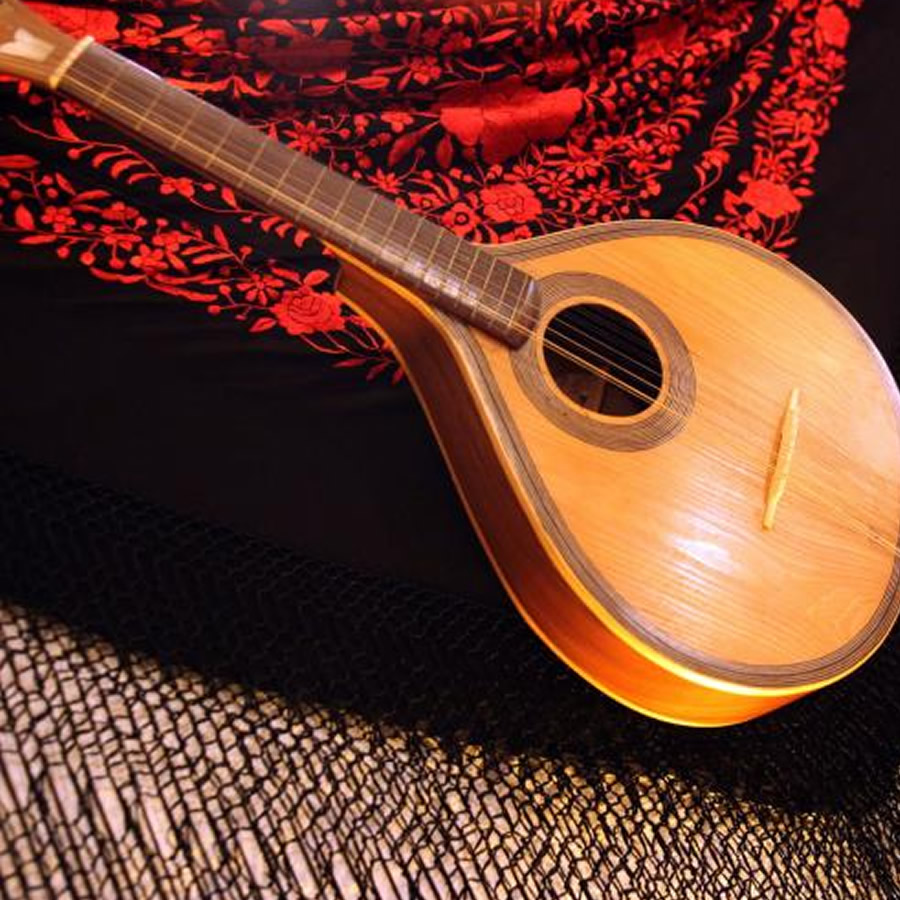
Fado
Despite Fado being a symbol of the Portuguese nationality, it is not, by all means, the national song. From region to region, Portugal possesses several rich and typical folklores of each geography, which has nothing to do with Fado. Perhaps we can, if you like, say that it is the form of folklore of Lisbon, Porto and Coimbra. Fado, a type of Portuguese singing, traditionally associated with pubs and cafés, that is renowned for its expressive and profoundly melancholic character. The singer of fado (literally, “fate”) speaks to the often harsh realities of everyday life, sometimes with a sense of resignation, sometimes with the hope of resolution. The music is performed by either a female or a male vocalist, typically to the accompaniment of one or two guitarras (10- or 12-string guitars), one or two violas (6-string guitars), and perhaps also aviola baixo (a small 8-string bass viola). Most of the repertoire follows a duple metre (usually with four beats to a measure), with a text arranged in quatrains or in any of several other common Portuguese poetic forms. Until the mid-20th century many fado performances featured a significant element of improvisation. Inevitably enriched with an array of emotive bodily gestures and facial expressions, fado aims—and indeed, is required—to evoke a penetrating sense of saudade (roughly, “yearning”). There are two distinct styles of fado, the older of which is associated with the city of Lisbon and the younger with the north-central Portuguese city of Coimbra. The Lisbon style emerged in the first half of the 19th century, following the 1822 return to Portugal of the Portuguese government, which had been removed to Brazil during the Napoleonic Wars. It arose in the city’s Alfama district, a socially and economically marginalized area that was a nexus of Iberian, South American (particularly Brazilian), and African peoples and traditions. A diverse array of dance traditions circulated within this milieu, including the Afro-Brazilian lundum; the Brazilian fado (distinct from the song genre that bears the same name); the fofa, which was common both in Portugal and in Brazil; and the Spanish fandango. Also popular at the time was the modinha, a type of Portuguese and Brazilian art song that often was accompanied by the guitar. The musics of these dance traditions merged with the modinha, ultimately giving birth to fado.
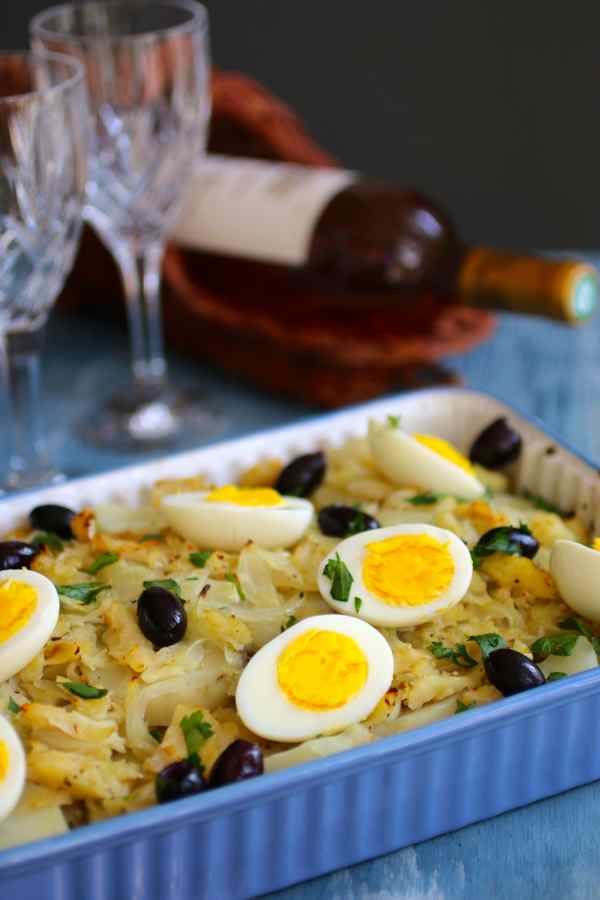
Bacalhau
Salted cod or bacalhau is a very common dish in whole Portugal and it is said that there exists at least one recipe for each day of the year. There are said to be over 1000 recipes in Portugal alone and it can be considered the iconic ingredient of Portuguese cuisine (but curiously the only fish that is not consumed fresh in this fish-loving nation). It is often cooked on social occasions and is the Portuguese traditional Christmas dinner in some parts of Portugal. Similar recipes can be found across Europe. It is also found in the cuisines of other territories and regions like Dominican Republic and Puerto Rico. In Norway, where most of the salted and dried cod is produced, bacalao commonly refers to a specific dish prepared with salted and dried cod, potatoes, onions, tomatoes and olives. In recent years, there has also been increasing interest in the wider range of Portuguese dishes based on dried and salted cod, however. Salted, dried cod, usually comes from Norway (bacalhau da Noruega), Iceland (bacalhau da Islândia) or Newfoundland (bacalhau da Terra Nova). It used to be very affordable, but with the collapse of the cod stocks and dismantling of Portuguese bacalhoeiro fleet, it became more expensive, especially near Easter and Christmas time, since it is a part of many traditional dishes of the holiday season. Bacalhau is also used to flavor a vegetable, dumpling and fish stew known as «Dhokras».
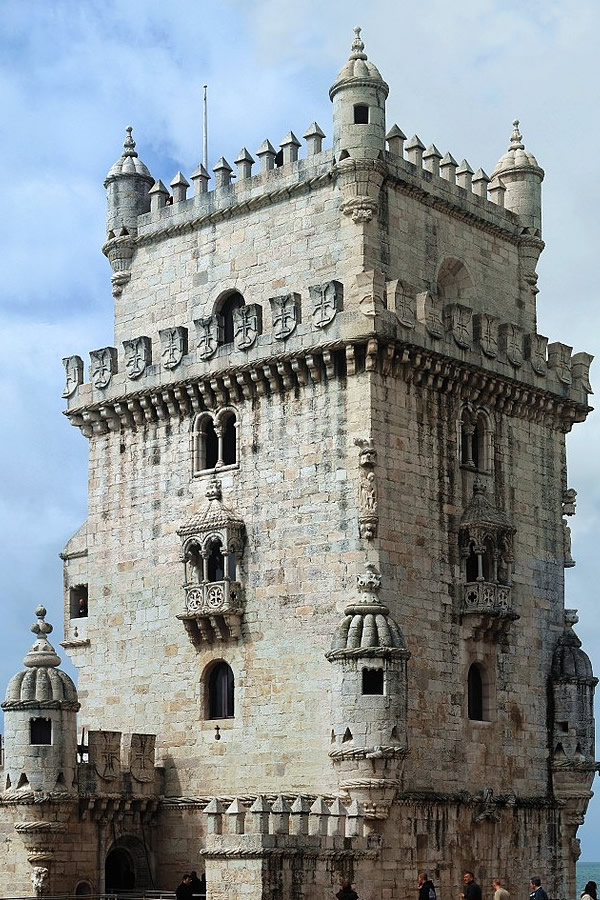
Manuelism
The Manueline (Portuguese: estilo manuelino, or Portuguese late Gothic, is the sumptuous, composite Portuguese style of architectural ornamentation of the first decades of the 16th century, incorporating maritime elements and representations of the discoveries brought from the voyages of Vasco da Gamaand Pedro Álvares Cabral. This innovative style synthesizes aspects of Late Gothic architecture with influences of the Spanish Plateresque style, Mudéjar, Italian urban architecture, and Flemish elements. It marks the transition from Late Gothic to Renaissance. The construction of churches and monasteries in Manueline was largely financed by proceeds of the lucrative spice trade with Africa and India. The style was given its name, many years later, by Francisco Adolfo de Varnhagen, Viscount of Porto Seguro, in his 1842 book, Noticia historica e descriptiva do Mosteiro de Belem, com um glossario de varios termos respectivos principalmente a architectura gothica, in his description of the Jerónimos Monastery. Varnhagen named the style after King Manuel I, whose reign (1495–1521) coincided with its development. The style was much influenced by the astonishing successes of the voyages of discovery of Portuguese navigators, from the coastal areas of Africa to the discovery of Brazil and the ocean routes to the Far East, drawing heavily on the style and decorations of East Indian temples. Although the period of this style did not last long (from 1490 to 1520), it played an important part in the development of Portuguese art. The influence of the style outlived the king. Celebrating the newly maritime power, it manifested itself in architecture (churches, monasteries, palaces, castles) and extended into other arts such as sculpture, painting, works of art made of precious metals, faience and furniture.
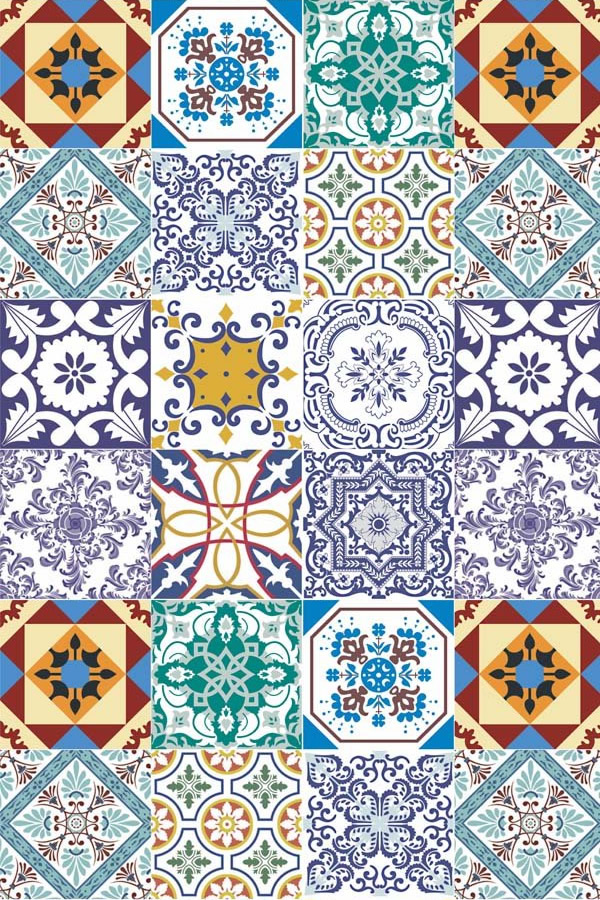
Azulejos
The Azulejos – tiles – are everywhere to be found in Portugal, decorating everything from walls of churches and monasteries, to palaces, ordinary houses, park seats, fountains, shops, and railway stations. They often portray scenes from the history of the country, show its most ravishing sights, or simply serve as street signs, nameplates, or house numbers. Although not a Portuguese invention (the use of glazed tiles began in Egypt), azulejos have been used more imaginatively and consistently in Portugal than in any other nation. They became an art form, and by the 18th century no other European country was producing as many tiles for such a variety of purposes and in so many different designs. Today, they still remain a very important part of the country’s architecture. After the Gothic period, most large buildings had extensive areas of flat plaster on their interior walls, which needed some form of decoration. These empty architectural spaces produced the art of the fresco in Italy, and in Portugal, the art of the azulejo. The term azulejo comes from the Arabic word az-zulayj, meaning «polished stone.» The Moors brought this term to the Iberian Peninsula, but despite their long presence, their influence in early Portuguese azulejos was actually introduced from Spain in the 15th century, well after the Christian reconquest. No tile work from the time of the Moorish occupation survives in Portugal. King Manuel I was dazzled by the Alhambra in Granada (Spain), and decided to have his palace in Sintra decorated with the same rich ceramic tiles. The first ones were imported from Seville, and in accordance to Islamic law, they portrayed no human figures, only geometric patterns. Gradually the Portuguese painters weaned themselves off ornamental decoration and employed human or animal figures in their designs. The dominant colors were blue, yellow, green and white, but in the 17th century, large, carpet-like tiles used just white and blue, the fashionable colors at the time of the Great Discoveries, influenced by the Ming Dynasty porcelain from China. They now portrayed Christian legends, historical events, and were not only decorative, but also protected against damp, heat and noise.
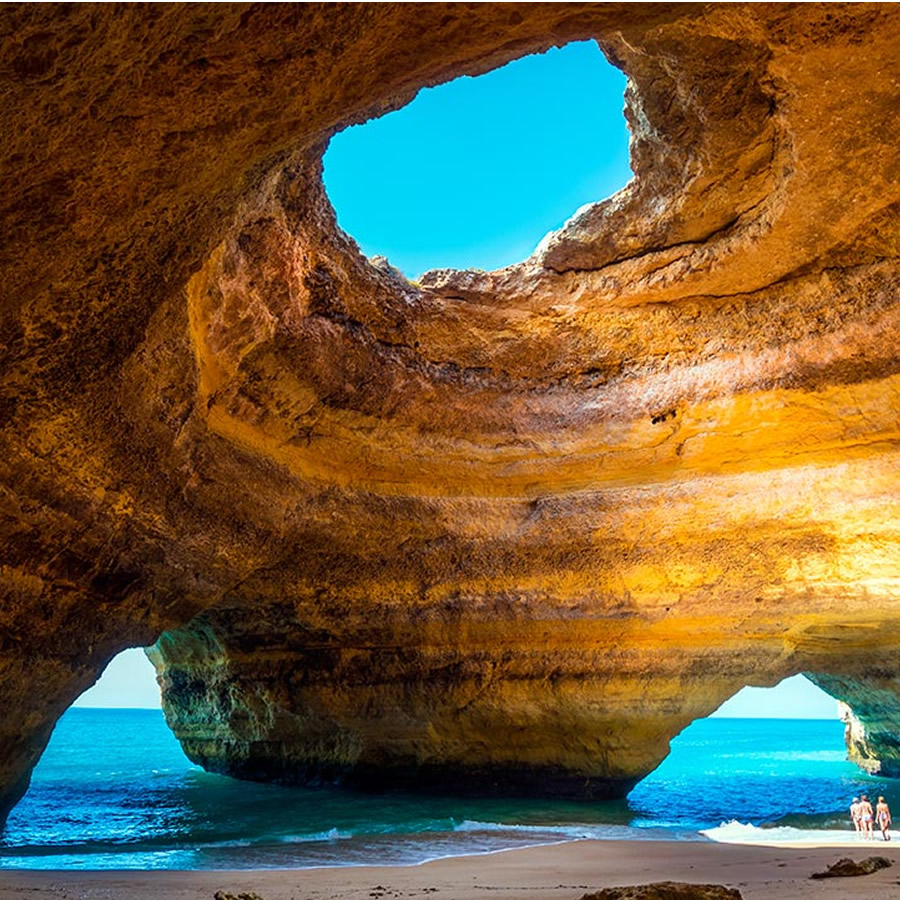
Algarve
Located in the South west extreme of Europe, famous for its unique coastal landscapes and white sandy beaches, the Algarve was the last region of Portugal to be conquered from the Moors in the mid-12th century. The region is not only famous for its beaches, sun and sea; it also holds a very long historical and cultural heritage from which remain old bridges, castles and city walls. After the Moorish conquest, the Algarve «Al-Gharb» became the Kingdom of the Algarve, and annexed to the Kingdom of Portugal after that. Nevertheless, influences and signs of Moorish presence are still visible throughout the region. In fact both Algarve and Alentejo (the greater region to the North of the Algarve) were of Muslim origin, the whole region was known before as «Gharb Al-Andalus», it means The West of Al-Andalus because this was the western part of the Muslim Andalusia, and one of the most important Muslim centers. Nowadays the region corresponds to approximately 6% of the area of the country, and its population is concentrated in the southern coast, and in major cities such as Faro, Lagos, Portimão, Olhão, Tavira and Vila Real de Santo António. Due to the proximity with the North of Africa, the Algarve region has a warm and mild climate throughout the year. It’s home to unique natural reserves, parks and beautiful coastal areas and a lovely countryside worthy of exploring by anyone looking for an adventure. In the Algarve you can still visit one of the 7 Natural Wonders of Portugal: the Ria Formosa – one of three protected areas where you can experience great nature tourism activities and tours.